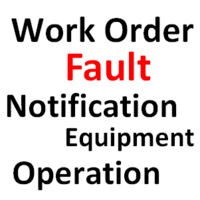I am fascinated by the notion of the physical world converging with the digital world and the benefits that become possible as a result. Not in the context of a humanoid weeding my garden, although that would be nice, but in the context of making better business management decisions based on more efficient data collection and reporting. The term digital transformation is often used to describe this convergence.
Think of growing the best possible garden full of award winning fruits and vegetables. The garden may consist of some physical things like dirt, seeds, containers, plants and tools, but the key to success is the information about the garden. The information about the soil, types of plants or seeds, appropriate time to plant and harvest, weeding and watering schedules, the best fertilizers to use based upon the soil conditions etc. This information can be collected and input into a software application as digital information. Once digital, software applications can analyze this information and create schedules and plans on how to optimize the production of the garden. Business operations are much the same. The more data that can be collected and analyzed on location, physical assets and facilities, environmental conditions, tasks, status, etc, the better planning and optimization can be done by software applications utilizing artificial intelligence.
 |
| Integrating Geospatial with ERPs |
Let's consider utilities and other geographically dispersed operations. Effective data collection, management, analysis, and reporting of data is critical. They own and management data-driven systems of pipes and wires, poles, valves, substations and switches all associated with data such as location, service history, asset details, maintenance records, applicable product warranties and history.
Utilities must know a massive amount of geospatial information about their assets and the environment around them. Think about an underground gas line. The utility needs to know the exact location of it, creeks, rivers, roads, property owners and property lines, access routes, location relative to other construction sites, environmental impact studies and issues, minor and major transportation lines crossed, just to mention a few data points. In addition, a lot of information is dynamic like new construction sites, road building, digging, erosion, etc. Not only must the utility collect and store static information like asset details, but dynamic data about activities and tasks around it. Wow! You can quickly see that efficient information collection is critical.
Efficiently operating a utility grid is mostly about implementing an efficient logistics of information system connecting field data collection and management and planning solutions in the office. If you are a sub-contractor for services, it is also the way you get paid.
Today many are considering the use of tablets for collecting and querying required field data. The problem is tablets still have painful limitations. First, while tablets have the computing power of laptops, their memory remains limited, which impacts their capabilities when working with large geospatial databases unless you purchase specialized geospatial software purpose-built for tablets. Secondly, connectivity in the field is often intermittent, while geospatial data access needs are constant. This necessitates a robust offline mobile app and data storage capability often missing from tablets. And finally, there are multiple tablet operating systems available, which often dictate the type of applications, databases and geospatial applications that can be used by your workforce.
If your organization is considering the use of tablets in the field look for applications that can support multiple tablet operating systems, offline data editing and data collection and integration with all of your required ERPs and geospatial enterprise applications and databases.
Now let's get back to the notion of the physical meeting the digital. In a utility, the digital information (
code halos) related to a physical asset and the tasks around it are the keys to planning, scheduling and maintaining it for optimized productivity. That means efficient data collection is critical to digitizing your physical environment and gaining the benefits of artificial intelligence built into your planning, scheduling and asset management solutions.
Today efficient data collection can be facilitated through M2M (machine-to-machine) embedded wireless chips integrated with sensors that automatically report on conditions and statuses of equipment, assets and facilities, and by field workers using smartphones, rugged laptops or tablets.
How efficient is your data collection system? Are there gaps that are preventing you from fully digitizing your physical operational area and leaving you with geographical and operational blind spots?
*************************************************************
Kevin Benedict,
Head Analyst for Social, Mobile, Analytics and Cloud (SMAC)
Cognizant
View Linkedin Profile
Follow me on Twitter @krbenedict
***Full Disclosure: These are my personal opinions. No company is silly enough to claim them. I am a mobility and SMAC analyst, consultant and writer. I work with and have worked with many of the companies mentioned in my articles.

 Enterprise mobility solutions can provide all kinds of "gifts of time" to employers and employees. From simple collaboration with colleagues, prospects and customers using your smartphone for voice, SMS, Skype or Google+ instead of traveling to a face-to-face, navigating quickly and accurately to a destination or to collect data in the field that is integrated with back-office systems. There are all kinds of ways time can be saved by utilizing mobile technologies.
Enterprise mobility solutions can provide all kinds of "gifts of time" to employers and employees. From simple collaboration with colleagues, prospects and customers using your smartphone for voice, SMS, Skype or Google+ instead of traveling to a face-to-face, navigating quickly and accurately to a destination or to collect data in the field that is integrated with back-office systems. There are all kinds of ways time can be saved by utilizing mobile technologies.


























